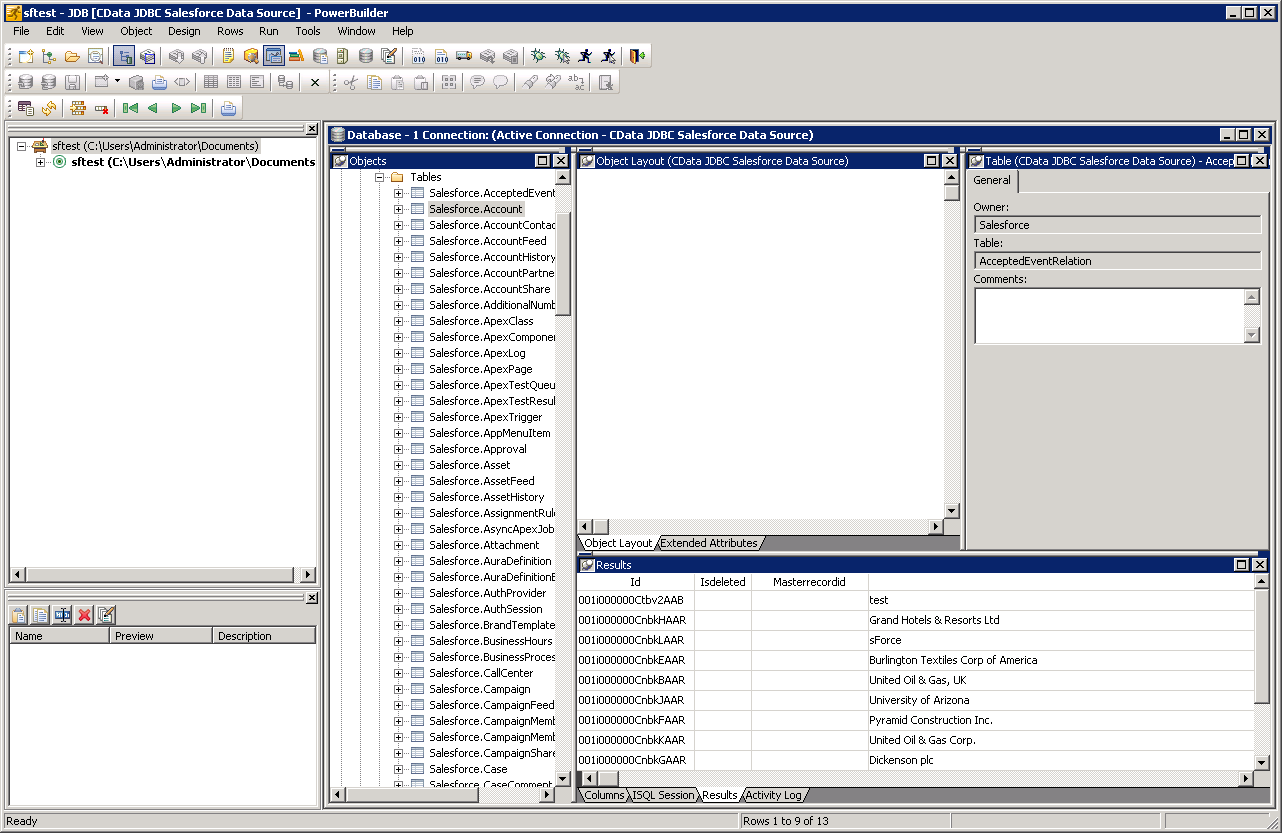Discover how a bimodal integration strategy can address the major data management challenges facing your organization today.
Get the Report →Connect to SAS Data Sets Data from PowerBuilder
This article demonstrates how to access SAS Data Sets data from PowerBuilder using the SAS Data Sets JDBC Driver.
The CData JDBC Driver for SAS Data Sets is a standards-based control that can be used from any platform or development technology that supports JDBC, including PowerBuilder. This article shows how to use the CData JDBC Driver for SAS Data Sets in PowerBuilder.
This article shows how to create a basic PowerBuilder application that uses the CData JDBC Driver for SAS Data Sets to perform reads and writes.
Connect to SAS Data Sets Data from PowerBuilder
Follow the steps below to use the Database Painter tool to create a database profile based on an JDBC URL for SAS Data Sets. You can use a database profile to save connection properties. In the Database Painter, you can graphically manipulate data as well as execute SQL queries.
Add the driver JAR to the PowerBuilder classpath. Set the CLASSPATH system environment variable to the path to the driver JAR, located in the lib subfolder of the installation directory.
Note: If you are using PowerBuilder Classic, you can also add the path to the driver JAR by clicking Tools -> System Options -> Java.
- Click Tools -> Database Painter.
- Right-click the JDBC node and click New Profile.
- In the Database Profile Setup dialog, enter the following:
- Profile Name: Enter a user-friendly name for the profile.
- Driver Name: Enter the class name of the driver, cdata.jdbc.sasdatasets.SASDataSetsDriver
- URL: Enter the JDBC URL.
Set the following connection properties to connect to your SAS DataSet files:
Connecting to Local Files
- Set the Connection Type to "Local." Local files support SELECT, INSERT, and DELETE commands.
- Set the URI to a folder containing SAS files, e.g. C:\PATH\TO\FOLDER\.
Connecting to Cloud-Hosted SAS DataSet Files
While the driver is capable of pulling data from SAS DataSet files hosted on a variety of cloud data stores, INSERT, UPDATE, and DELETE are not supported outside of local files in this driver.
Set the Connection Type to the service hosting your SAS DataSet files. A unique prefix at the beginning of the URI connection property is used to identify the cloud data store and the remainder of the path is a relative path to the desired folder (one table per file) or single file (a single table). For more information, refer to the Getting Started section of the Help documentation.
Built-in Connection String Designer
For assistance in constructing the JDBC URL, use the connection string designer built into the SAS Data Sets JDBC Driver. Either double-click the JAR file or execute the jar file from the command-line.
java -jar cdata.jdbc.sasdatasets.jarFill in the connection properties and copy the connection string to the clipboard. A typical JDBC URL is below:
jdbc:sasdatasets:URI=C:/myfolder;
![The JDBC data source defined in the Database Profile Setup dialog. (Salesforce is shown.)]()
- To view and modify a table, right-click a table and then click Edit Data -> Grid.

Using SAS Data Sets Data with PowerBuilder Controls
You can use standard PowerBuilder objects to connect to JDBC data sources and execute queries. The following example shows how to retrieve SAS Data Sets data into a DataWindow. You can add the following code to the open method:
SQLCA.DBMS = "JDBC"
SQLCA.AutoCommit = False
SQLCA.DBParm = "Driver='cdata.jdbc.sasdatasets.SASDataSetsDriver',URL='jdbc:sasdatasets:URI=C:/myfolder;";
CONNECT USING SQLCA;
dw_restaurants.SetTransObject(SQLCA);
dw_restaurants.Retrieve();







